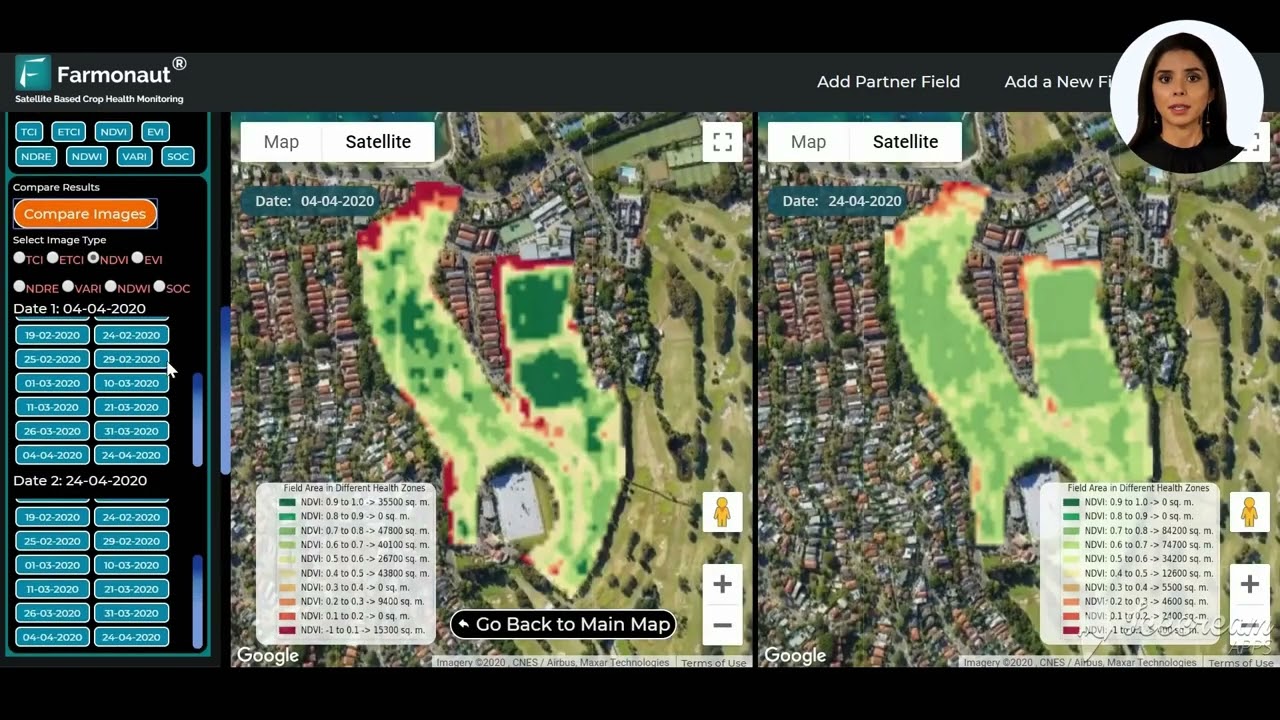Rocky Mount Road History: 7 Powerful Sites in South Carolina
Table of Contents
- Introduction
- Understanding Rocky Mount Road History
- Colonial Roads in South Carolina: Context and Origins
- 7 Powerful American Revolution Sites Along Rocky Mount Road
- Historical Sites Summary Table
- The Agricultural Land and Marginality During Colonial Era
- Brattonsville and the Bratton Family: Stewards of Patriotism
- The Battle of Huck’s Defeat: Strategy, Surprise, and Legacy
- Farmonaut: Revolutionizing Modern Agricultural Land Management
- Preserving History: Visiting South Carolina’s Revolutionary Sites
- Frequently Asked Questions (FAQ)
- Conclusion
“Seven historic sites along Rocky Mount Road mark key American Revolution battles in South Carolina.”
Introduction
South Carolina’s landscape brims with history, bearing the silent marks of colonial ambition, burgeoning patriotism, and the tumultuous battles of the American Revolution. Among its most compelling historical veins is Rocky Mount Road, a colonial artery that played a significant role in connecting plantations, foraging routes, and critical strongholds. Today, as we trace the Rocky Mount Road history, we uncover a tapestry of intertwined stories featuring Patriots and British forces, agricultural land, and the indigenous and enslaved peoples whose existence shaped—and was shaped by—these paths.
In this comprehensive exploration, we’ll dive into seven of the most powerful sites along Rocky Mount Road in South Carolina. Each offers a unique perspective into the battles, hardships, and legacies spanning York and Fairfield Counties and beyond. Join us as we journey along this historic road, localize the significance of its intersections and landmarks, and discover the revolutionary roads that continue to influence our understanding of the past.
Understanding Rocky Mount Road History
Our journey begins with the rich Rocky Mount Road history. Before you are the remains of a colonial road known as Rocky Mount Road. This historic road originally stretched from the countryside near York County in the northwest to the formidable British stronghold at Rocky Mount in what is now Fairfield County. Crossing key intersections such as the Charleston Road or Armstrong Ford Road (today’s Brattonsville Road), the road connected plantation land, overlooked marginal agricultural areas, and traversed essential sites of the American Revolution.
It was along these dirt paths—shaped by foot traffic, wagons, and hoofbeats—that both Patriots and British troops spied, foraged for food and supplies, and made vital decisions impacting the outcome of the southern campaign. The very land underfoot, often considered ‘marginal’ and lacking significant agricultural value, bore witness to more than physical movement: it witnessed clandestine meetings, encampments, and final farewells.
The intersection of Rocky Mount Road and Brattonsville Road was often overlooked by planters and farmers, as its poor soils prevented intensive cropping. Yet, this very fact relegated essential but undervalued sites—such as the Enslaved Ancestral Burial Ground—to these peripheral lands, their stories surviving thanks to recent historical markers and ongoing commemorations. As we trace this road, we walk in the very footsteps of those who moved armies, built communities, and changed American history.
Colonial Roads in South Carolina: Context and Origins
Rocky Mount Road was not an anomaly; rather, it was part of a network of colonial roads South Carolina that were essential arteries for movement, trade, and communication. These roads predated modern highways and were hewn into the landscape by settlers, enslaved peoples, and indigenous residents, often following ancient trails.
The agricultural land colonial era saw roads connecting plantations, ferry crossings, and budding towns. For planters and farmers, these routes were lifelines for shipping crops to markets, bringing in supplies, and recruiting labor—sometimes by force, and too often, through the brutal mechanism of slavery.
Many of the battle sites South Carolina remembers today were chosen due to their accessibility via these roads. During the American Revolution, the flexibility to move forces quickly along colonial roads often meant the difference between victory and devastating loss.
“Colonial roads in South Carolina played a role in over 20 documented Revolutionary War skirmishes.”
7 Powerful American Revolution Sites Along Rocky Mount Road
Let us explore the seven historic sites—each a touchstone of Patriot and British battles South Carolina—and unveil their enduring legacies:
-
Rocky Mount Stronghold (Fairfield County)
- Location: Rocky Mount, Fairfield County, South Carolina
- This southern anchor of Rocky Mount Road was transformed into a British stronghold. During the Revolution, it bulwarked British control over the backcountry, serving as a base for foraging, food and supply collection, and launching raids deep into Patriot territory. The stronghold was critical for both logistics and military strategy.
-
Brattonsville and the Bratton Plantation (York County)
- Location: Near McConnells, York County
- Once the home of Colonel William Bratton, this plantation was at the heart of Patriot defense in the region. Its location at the intersection of Rocky Mount Road and Charleston Road made it strategic for staging resistance and spreading intelligence, as famously demonstrated by Martha Bratton’s bravery during Huck’s incursion.
-
Walker’s Mill (Chester County)
- Location: Chester County, present-day location unknown
- Reputed as Huck’s last known location before the pivotal attack, Walker’s Mill was crucial in the Patriot detachment’s reconnaissance. The Patriots shadowed the British troops, gathering intelligence before the famous ambush.
-
Williamson Plantation and the Site of Huck’s Defeat (York County)
- Location: Near McConnells, York County
- The neighboring plantation of James Williamson is where Huck’s Defeat unfolded. Here, the Patriot forces split into groups to attack from two sides, surprising the British and changing the fate of the southern campaign. The battle was fought and won by ‘the light of an aurora borealis.’
-
Enslaved Ancestral Burial Ground
- Location: Intersection of Rocky Mount Road and Brattonsville Road
- Often relegated to marginal land with little agricultural value, this sacred ancestral ground preserves the memory of enslaved individuals whose stories and labor shaped the region’s prosperity.
-
Brattonsville Road (Charleston/Armstrong Ford Road)
- Location: Modern Brattonsville Road, York County
- Once a busy colonial road, this route continues to bear testimony to the region’s deep ties to the Revolution, serving as a backdrop for countless movements of Patriot and British troops.
-
Fairfield County Historical Marker (2025, York County Border)
- Location: Near McConnells, York County
- This historical marker, erected in 2025 for the Revolution’s 250th anniversary, stands as a gateway for visitors seeking to understand the enduring resonance of Rocky Mount Road history and its pivotal sites.
Historical Sites Summary Table
| Site Name | Location | Year Established (Est.) | Historical Significance | Key Events/Features | Visitor Info |
|---|---|---|---|---|---|
| Rocky Mount Stronghold | Fairfield County | 1770s | British garrison, supply depot | Foraging, battle preparations, base of operations | Preserved; open to historical tours |
| Brattonsville & Bratton Plantation | Near McConnells, York County | circa 1760 | Patriot headquarters, plantation | Site of planning, intelligence relay (Watt, Martha Bratton) | Open-air museum & historic site |
| Walker’s Mill | Chester County | 1770s | Reconnaissance site | Patriot forces shadowed Huck’s troops | Markers indicate probable area |
| Williamson Plantation (Huck’s Defeat) | Near McConnells, York County | 1770s | Battle site | Patriot surprise attack, British defeat | Tours available; annual reenactment |
| Enslaved Ancestral Burial Ground | Rocky Mount Rd & Brattonsville Rd | 1700s | Sacred ground for enslaved Africans | Historical marker, reflective space | Accessible site; interpretive signage |
| Brattonsville Rd (Charleston/Armstrong Ford Rd) | York County | Pre-1760s | Colonial road, vital travel corridor | Primary movement for armies & trade | Well-marked, scenic drive |
| Fairfield County Historical Marker | York/Fairfield County Line | 2025 | Commemorative marker | Celebrates 250th Revolution anniversary | Visible roadside; parking available |
The Agricultural Land and Marginality During the Colonial Era
As we tread these historical byways, it’s crucial to understand the agricultural landscape that shaped the lives and fortunes of past generations. During the colonial era, land value was measured by its fertility and suitability for staples like tobacco, indigo, and cotton. However, significant tracts at the intersection of Rocky Mount Road and Brattonsville Road were seen as “marginal land”—areas with poor soil or inconvenient geography that planters and farmers often left uncultivated.
Ironically, it was these poorly valued patches that became sites of deep memory and importance, especially for enslaved people. Burial grounds, including the Ancestral Burial Ground, were frequently set apart from arable fields, a tragic testament to how value was assigned in a system built on forced labor. These “invisible” spaces are now honored through dedicated historical markers, providing a more complete and humane picture of our shared past.
Today, technology such as Farmonaut’s large-scale farm management solutions helps modern land stewards evaluate soil health, optimize resource use, and avoid the mistakes of the colonial past by increasing productivity on even the most marginal land. This commitment to sustainability, guided by satellite insights rather than exploitative mindsets, is shaping a new agricultural legacy.
Brattonsville and the Bratton Family: Stewards of Patriotism
One of the most celebrated families along Rocky Mount Road is the Brattons. Their plantation became a symbol of Patriot resistance and resilience. In 1776, Colonel William Bratton was a leading figure among local militias, engaging in intelligence gathering and direct confrontation with British forces.
The tale of Martha Bratton—who, upon learning of Captain Christian Huck’s presence, sent an enslaved man named Watt to warn her husband—embodies the courage and resourcefulness of the colonial women and enslaved people who risked everything for their cause. These episodes showcase how domestic spaces, agricultural land, and seemingly quiet roads were intertwined with the feverish energy of war.
Moreover, innovations in reconnaissance and logistics were mirrored centuries later by modern tools such as Farmonaut’s fleet management platform, which allows users to optimize the movement of agribusiness transport and resources for today’s complex agricultural landscapes.
Drawing a line from yesteryear to today, Farmonaut’s blockchain-powered product traceability is revolutionizing how we understand the journey of agricultural goods, much like tracking the paths once moved by militias and supply wagons on colonial roads South Carolina.
The Battle of Huck’s Defeat: Strategy, Surprise, and Legacy
Few battle sites South Carolina compare in legendary status to the Williamson Plantation. In July 1780, following a series of raids, Captain Huck and his British detachment took refuge here. According to contemporary accounts, Patriot forces shadowed these enemies along Rocky Mount Road for thirty miles, making note of every stop for foraging for food and supplies as well as any acts of harassment or imprisonment.
When Patriots approached within “a mile and a quarter,” they “filed off to the left of the road and dismounted.” Officers split their forces into groups, launched a two-pronged attack from opposite sides of the plantation, and caught the British troops completely off guard. The struggle ended with a fierce melee, victory for the Patriots, and profound consequences for local morale.
As Colonel Bratton’s son recounted, the battle was “fought and won by the light of an aurora borealis”—an omen-like display on a momentous night that would echo across the centuries. Today, the historical marker near McConnells reminds us of both the bloodshed and the hope that crossed this land.
In line with honoring history, Farmonaut’s carbon footprint tracking technologies are ensuring that the land we manage today is protected from excessive exploitation, helping us learn from the environmental lessons of the past.
Modern farmers—unlike their colonial forebears—can gain swift access to credit and farm insurance using Farmonaut’s satellite-based crop loan and insurance verification. This system harnesses the power of real-time data, streamlining a process that was once difficult and fraught with risk.
Farmonaut: Revolutionizing Modern Agricultural Land Management
As we reflect on centuries of agricultural innovation and turbulence, it’s clear that technology continues to be a defining factor in land stewardship. Farmonaut is at the forefront of this movement today, bridging traditional agricultural practices with state-of-the-art advancements in satellite imaging, artificial intelligence, and data analytics.
Let’s explore how Farmonaut’s technology offers modern farmers and land managers the precision insights they need:
- Satellite-Based Crop Health Monitoring: Farmonaut delivers real-time field data—including NDVI vegetation health and soil moisture readings—helping farmers make informed decisions to increase yields, optimize fertilizer usage, and conserve water.
- Jeevn AI Advisory System: This intelligent advisory service interprets satellite and weather data to suggest best farming practices, supporting increased productivity and lower resource wastage.
- Blockchain-Based Product Traceability: By deploying blockchain technology for transparent record-keeping, Farmonaut ensures the authenticity and reliability of farm-to-market supply chains—a modern version of ensuring trust much like the records and markers left along historical roads York County.
- Fleet and Resource Management: For those overseeing vast or multiple plantations, Farmonaut’s suite lets us coordinate vehicle and equipment movement, further reducing costs and maximizing efficiency—vital for both small farms and large agribusiness operations.
- Carbon Footprinting: Armed with tailored insights on emissions and resource usage, Farmonaut’s tools allow farmers to lessen their environmental impact while maintaining growth and profitability, promoting sustainability from field to store.
Farmonaut offers these services through its cutting-edge Android and iOS apps, web/browser interface, and APIs for integration with other agritech systems. For developers, Farmonaut’s powerful API opens doors to satellite data, while the detailed API Developer Documentation makes onboarding easy for technical teams.
Whether you farm in the American South or manage agricultural land globally, Farmonaut subscriptions are available in flexible packages, accessible directly in the section below:
Preserving History: Visiting South Carolina’s Revolutionary Sites
For those inspired to traverse the legacy of Rocky Mount Road history, numerous Fairfield County historical markers and York County sites are accessible via scenic drives and heritage tours. Many of the battle sites South Carolina honors today preserve not only the moments of fierce confrontation but also the quiet intervals where strategy was devised and alliances forged.
Heritage tourism projects have marked colonial plantations South Carolina and built on local oral histories, ensuring that both triumphs and tragedies—of planters, farmers, soldiers, and enslaved families alike—are not lost to time.
- Plan your visit: Start at Brattonsville’s open-air museum, explore the well-marked Brattonsville Road, and follow in the footsteps of Patriot detachments past local plantations and ancestral grounds.
- Honor the unsung: Reflect at the Enslaved Ancestral Burial Ground and gain perspective on the marginalized voices so crucial to our real understanding of Rocky Mount Road history.
- Connect with present solutions: Explore how tools like Farmonaut’s Agro Admin App are supporting modern sustainable agriculture and the responsible use of land globally.
Frequently Asked Questions (FAQ)
What is Rocky Mount Road and why is it significant?
Rocky Mount Road is a surviving section of a historical colonial route traversing York and Fairfield Counties, South Carolina. The road linked plantations, facilitated travel and foraging during the Revolution, and was key in several Patriot and British battles.
What are the top American Revolution sites along Rocky Mount Road?
The seven premier sites include Rocky Mount Stronghold, Brattonsville Plantation, Walker’s Mill, Williamson Plantation (site of Huck’s Defeat), Enslaved Ancestral Burial Ground, Brattonsville Road, and the 250th Anniversary Historical Marker at the York/Fairfield County line. Each offers a lens onto battle sites South Carolina, day-to-day life, and historical memory.
How does Farmonaut connect to modern agricultural land management?
Farmonaut provides farmers and agricultural organizations affordable access to satellite-based crop monitoring, resource management, and AI-driven advice. Unlike the marginal or undervalued land of the colonial past, contemporary stewards—using Farmonaut—can ensure all their land is productive, sustainable, and efficiently managed.
How can I track or verify my farm’s environmental impact or crop origin?
Farmonaut offers carbon footprint monitoring and blockchain-based traceability services, making it easy to meet sustainability goals and provide end-to-end supply chain transparency for your agricultural products.
Conclusion
The history theme woven into the roads, intersections, and landscapes of South Carolina reverberates not only in the stories of Patriots and British troops but also in every plowed field and every plot marked as “marginal land.” Rocky Mount Road stands as a testament to the enduring interplay between land, conflict, and community.
By exploring these seven powerful sites, we gain insight into the vibrant drama of the American Revolution, witness the toll (and triumphs) experienced by planters, farmers, and enslaved peoples, and renew our commitment to thoughtful stewardship of agricultural land. As we take modern steps—both literal and digital—toward sustainability and inclusivity through technologies like Farmonaut, we honor the complex past and shape a hopeful future for all who work the land.





















